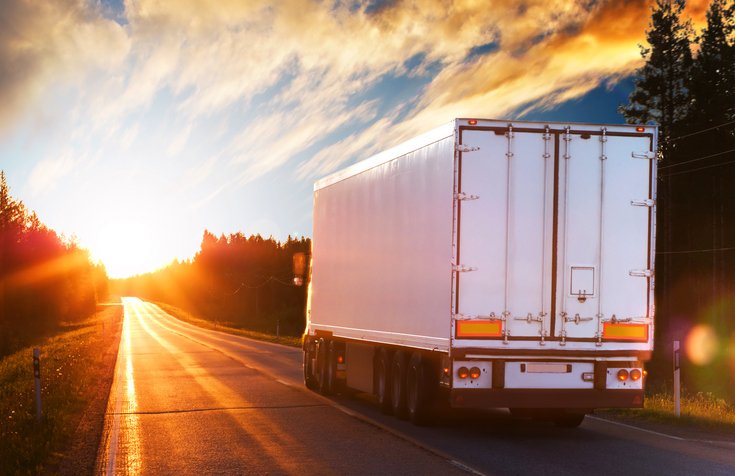The European Union has long enjoyed a reputation as a global leader in climate diplomacy. However, this is increasingly coming into question, in light of revelations of the bloc’s outdated vehicle emissions testing regime and the suboptimal pace in introducing CO2 legislation to address ever-increasing road freight emissions.
The European Union has long enjoyed a reputation as a global leader in climate diplomacy. However, this is increasingly coming into question, in light of revelations of the bloc’s outdated vehicle emissions testing regime and the suboptimal pace in introducing CO2 legislation to address ever-increasing road freight emissions.
Last year, the Dieselgate scandal shocked the world by exposing the EU’s antiquated and dysfunctional vehicle emissions testing system, which had allowed automakers to game emissions testing practices for decades. However, in this article, we take a closer look at another key area in which the EU lags behind its international counterparts, namely decarbonising its trucks.
The European Union still does not have fuel economy standards for its heavy vehicles, while a number of countries, including the United States, Canada, China and Japan, have already implemented full legislation to limit road freight emissions. In addition to undermining its industrial competitiveness, the EU’s reluctance to introduce fuel economy standards for trucks has translated into marginal innovation and worsening the shipping sector’s carbon footprint over the past two decades.
Although trucks make up only less than 5% of road vehicles in the European Union, they are responsible for 25% of total carbon dioxide emissions from road transport. Although passenger cars outnumber freight fleets, they are a major source of demand for oil (that is, trucks consume, on average, up to ten times more fuel per kilometer and travel ten times more than passenger cars).
However, achieving the EU target of reducing CO2 emissions from transport by 60%, and completely eliminating the use of fossil fuels in cars by 2050, will require an end to this inaction.
What is the EU currently doing about shipping emissions?
The Commission’s short-term strategy for the freight sector focuses on measuring and verifying CO2 emissions from newly registered trucks. In other words, the Commission has developed a computer simulation tool, VECTO, which will form the basis of the regulation it is currently drafting which will require the certification, reporting and monitoring of CO2 emissions from all new heavy vehicles. The legislative proposal is expected to be finalized by the end of the year, and the first reporting period is expected to take place in 2018-2019. This means that work on design options for EU-wide fuel economy standards for trucks will only start from 2020 at the earliest.
We have to go beyond simply measuring emissions, to actually reducing emissions
Achieving the EU’s decarbonisation targets, as well as the 2°C target set in the Paris Agreement, will require immediate efforts to significantly reduce CO2 emissions and stimulate the use of zero-emission alternative fuels in transport.
Although VECTO is an important step in the right direction, it alone will not get us where we want, and certainly not fast enough. In addition to its slow pace of completion, the VECTO tool suffers from a number of major limitations; One is its limited scope, which covers only certain types of vehicle classes and excludes trailers or replacement engines. This reflects the committee’s short-sighted vision that failed to anticipate future market and technological developments.
When developing this testing tool, we need to draw lessons from NEDC testing. In finalizing VECTO, Bellona calls on the Commission to ensure an independent, reliable and future-proofing tool.
So what is the right approach moving forward?
“The optimal response to decarbonisation of shipping will be practical, thus making the best use of the technologies and solutions available today, while building a long-term vision and anticipating broader developments, such as electrification,” comments Teodora Serafimova, Policy Advisor at Bellona Europe.
Fuel savings of up to 20% can easily be achieved by implementing design improvements, including improved trailers and tractors, reduced aerodynamic drag, and low-resistance tires. Further significant reductions in CO2 emissions could be achieved through the introduction of smart charging on European roads, i.e. differentiating charging based on the fuel efficiency of trucks, which would be a key element in stimulating the production of cleaner, more efficient trucks.
Make charging part of the electric revolution
Last but not least, efforts towards introducing ambitious fuel economy standards for trucks must be accelerated. This will provide much-needed impetus for investments in decarbonisation and the electrification of freight transport.
Bellona considers electricity one of the most promising ways to reduce carbon dioxide emissions, reduce dependence on oil, and improve local air quality. While current applications for electric charging are limited, it appears that this may change quickly in the near future.
In fact, it appears that the trucking industry is waking up to this new reality. Last summer, Mercedes-Benz and Daimler Trucks launched a prototype “Urban eTruck,” a pure battery electric heavy-duty truck for urban delivery. The truck is said to have a range of 200 kilometres, in other words, enough range for a typical daily delivery run. It is expected to go into production in early 2020.
Other major companies, including Tesla, Volvo Trucks’ Mack division, and BYD, have also announced plans to develop heavy-duty electric vehicles. While further improvement in terms of battery capacity and costs is needed to make e-trucks truly viable, the commitment of key charging industry players to electrification is critical to accelerating widespread deployment of the technology.





